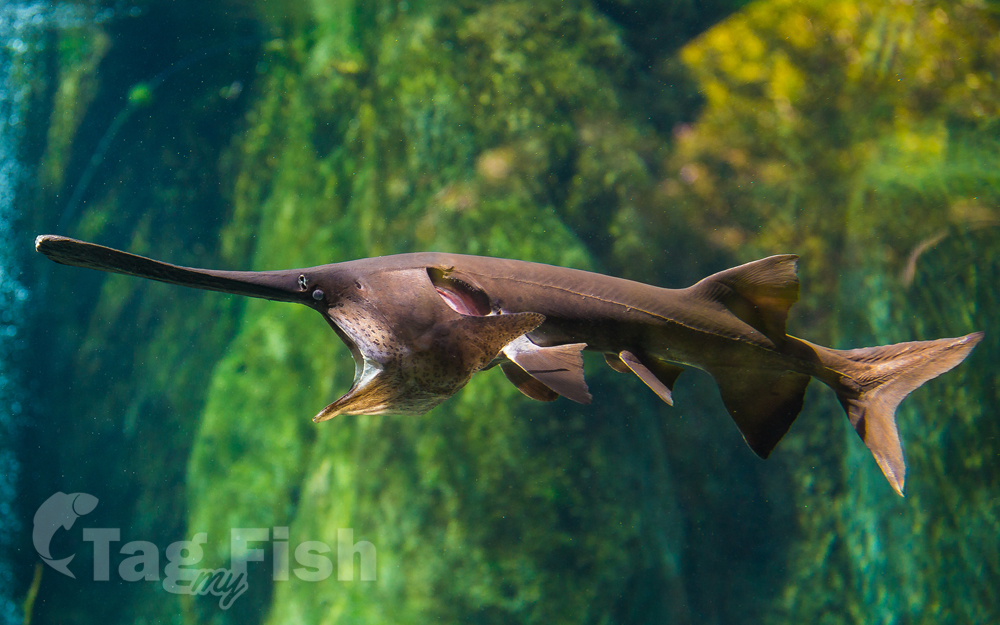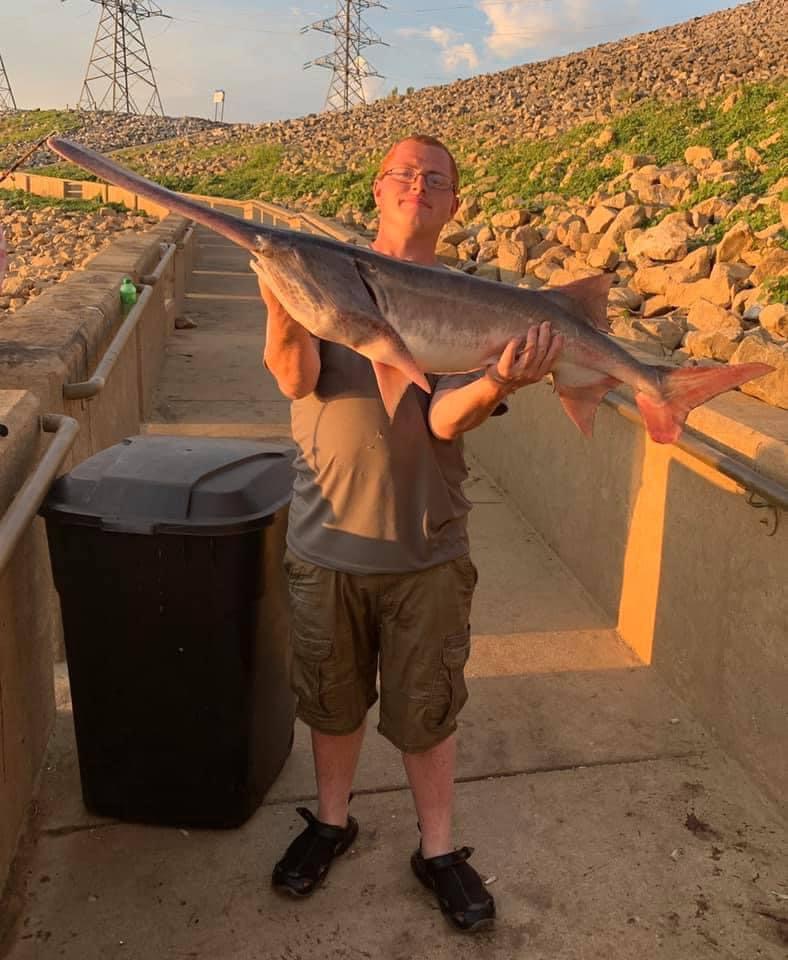American paddlefish
(Polyodon spathula)

Classification
General data
The American paddlefish (Polyodon spathula) is a species of basal ray-finned fish closely related to sturgeons in the order Acipenseriformes. Fossil records of paddlefish date back over 125 million years to the Early Cretaceous.
The American paddlefish is a smooth-skinned freshwater fish commonly called paddlefish, and is also referred to as Mississippi paddlefish, spoon-billed cat, or spoonbill. It is the only living species in the paddlefish family, Polyodontidae. The other recently-surviving member of this lineage is the possibly now extinct Chinese paddlefish (Psephurus gladius) endemic to the Yangtze River basin in China.
The American paddlefish is often referred to as a primitive fish or a relict species because it retains some morphological characteristics of its early ancestors, including a skeleton that is almost entirely cartilaginous and a paddle-shaped rostrum (snout) that extends nearly one-third its body length. It has been referred to as a freshwater shark because of its heterocercal tail or caudal fin resembling that of sharks. The American paddlefish is a highly derived fish because it has evolved with adaptations such as filter-feeding. Its rostrum and cranium are covered with tens of thousands of sensory receptors for locating swarms of zooplankton, which is their primary food source.
American paddlefish are native to the Mississippi River basin and once moved freely under the relatively natural, unaltered conditions that existed prior to the early 1900s. Paddlefish commonly inhabited large, free-flowing rivers, braided channels, backwaters, and oxbow lakes throughout the Mississippi River drainage basin, and adjacent Gulf drainages. Their peripheral range extended into the Great Lakes, with occurrences in Lake Huron and Lake Helen in Canada until about 90 years ago. American paddlefish populations have declined dramatically primarily because of overfishing, habitat destruction, and pollution. Poaching has also been a contributing factor to their decline and will continue to be as long as the demand for caviar remains strong. Naturally occurring American paddlefish populations have been extirpated from most of their peripheral range, as well as from New York, Maryland, Virginia, and Pennsylvania. The paddlefish has been reintroduced in the Allegheny, Monongahela, and the Ohio river systems in western Pennsylvania, however. The current range of American paddlefish has been reduced to the Mississippi and Missouri River tributaries and Mobile Bay drainage basin. They are currently found in twenty-two states in the U.S., and those populations are protected under state, federal and international laws.












